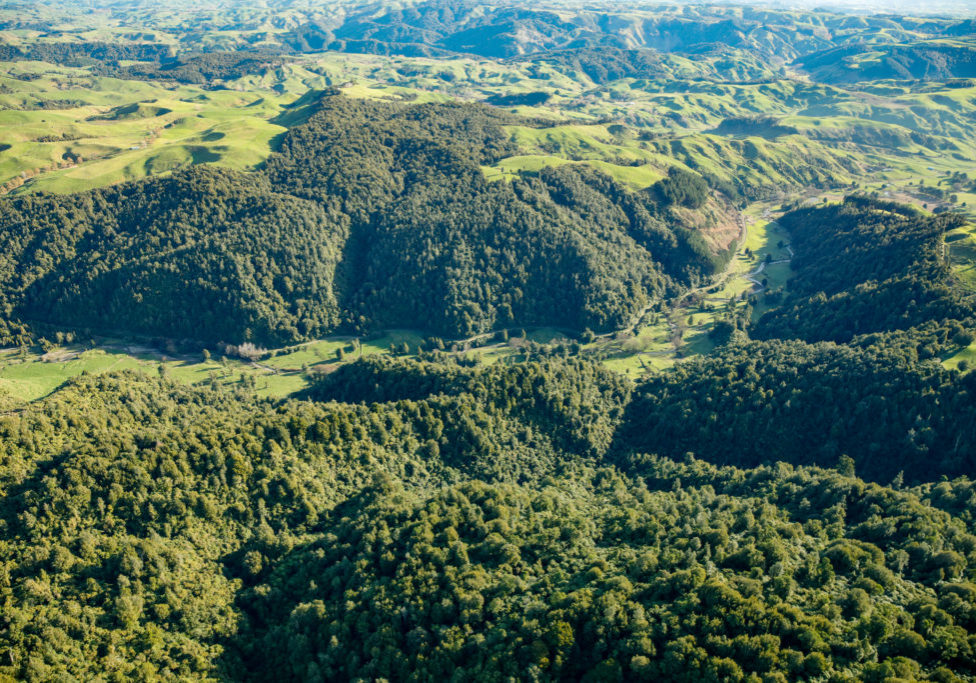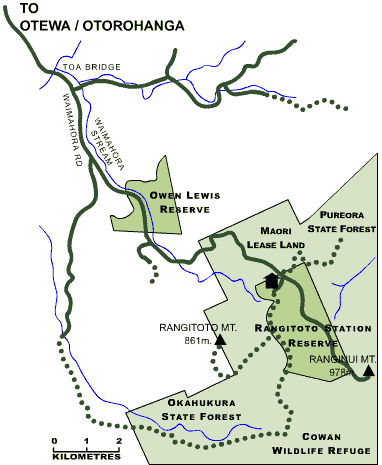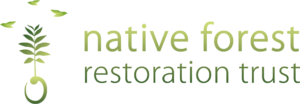Owen Lewis

Location
Owen Lewis Reserve lies on both sides of the Waimahora Stream, which runs from the Rangitoto Range in the King Country, south-east of Otorohanga. It is a 250 hectare block in two parts divided by the stream and a road through a narrow river flat.
History
Some logging of podocarps occurred in the lower more accessible part of the reserve many years ago. The effects of this logging are today scarcely visible as totara, rimu, and kahikatea emerge through the canopy. Tree rata have been reduced by possum browsing.
Vegetation
Prominent among the canopy trees are rewarewa, pukatea, rata, rimu, kahikatea, and tawa. Mahoe, fuchsia, and wineberry grow very large in the favourable conditions of the valley. The gullies have a tropical feel, with lush kiekie, nikau and rhabdothamnus. Bush lawyer and supplejack thrive and, since there are no tracks cut, make access difficult. A good view of the forest can be had from the river flat which, separating the two halves of the reserve, is still being grazed by the farmer.
Wildlife
Birds that have been identified include the bellbird, tui, warbler, pigeon, kingfisher, whitehead, fantail, paradise duck, and spur-winged plover.
Special Values
The reserve has significant values as it borders both sides of the Waimahora Stream, and the road leading to Rangitoto Station. Since most of the surrounding land has been cleared for pasture or converted to pines, the forest of the reserve is a conspicuous feature in the landscape. It is also an extension of the forests lying to the east which, comprising the Rangitoto Range, forms one of the largest blocks of native forest in the Waikato.. This makes it an important seed source for the whole area. Since the sides of the valley are steep, the bush cover has an important flood control function in reducing and filtering the water flows into the Waimahora, a major tributary of the Waipa River.
Facilities
There are no facilities within the Reserve and visitor access is only with prior approval. Entry is at your own risk.
Management
Because the forest is already dense, no active restoration is needed. Management will concentrate on fences to keep stock out, and periodic predator control.
No hunting without the express permission of the Native Forest Restoration Trust
How to Get There
Starting from State Highway 3, south of the Waipa River bridge on the south edge of Otorohanga, turn into Otewa Road under the rail bridge. Follow Otewa Road for 20 km, at which point you cross the Toa bridge. At the next intersection turn right into Waimahora Road. Keep left at the next intersection and continue on Waimahora Road for approximately 3km.


